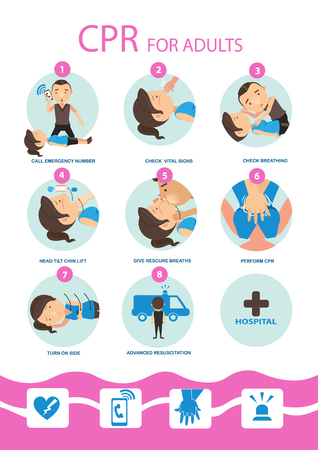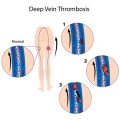Introduction to Vascular Lesions
Vascular lesions are a group of skin conditions characterised by abnormal blood vessels either on or beneath the surface of the skin. These can appear in various forms, such as birthmarks, spider veins, or port-wine stains. In the UK, vascular lesions are relatively common and affect individuals of all ages and backgrounds. While many are harmless, some can cause discomfort or self-consciousness, especially when they occur in visible areas. Accurate identification of vascular lesions is crucial, not only for ensuring proper management but also for ruling out more serious underlying health concerns. With advances in medical technology, particularly laser treatments, there are now effective options available to address these lesions safely and efficiently. Understanding the types and characteristics of vascular lesions is the first step towards choosing the most appropriate treatment and achieving the best possible outcomes.
2. Common Types of Vascular Lesions in the UK
Vascular lesions are a frequent concern in dermatological clinics across the UK, presenting with a variety of forms and severities. Understanding these common types is crucial for accurate identification and effective treatment selection. Below, we highlight the most prevalent vascular lesions encountered within British clinical practice, focusing on their distinctive characteristics and clinical presentation.
| Lesion Type | Clinical Appearance | Typical Locations | Key Features |
|---|---|---|---|
| Port Wine Stains (Naevus Flammeus) | Flat, well-demarcated patches; pink to deep purple in colour | Face, neck, scalp; occasionally limbs | Tend to darken and thicken with age; usually present at birth; may become nodular over time |
| Spider Naevi (Spider Angiomas) | Central red spot with radiating fine vessels resembling a spider’s legs | Face, neck, upper chest; more common in children and pregnant women | Blanch with pressure; often associated with hormonal changes or liver disease in adults |
| Telangiectasia | Small, dilated blood vessels visible near the skin surface; red, blue or purple lines | Nose, cheeks, chin, lower legs | Common in rosacea and chronic sun damage; may be idiopathic or secondary to other conditions |
| Haemangiomas (Strawberry Naevi) | Raised, bright red to deep purple lesion; soft and compressible | Head, neck, trunk; can appear anywhere on the body | Most commonly seen in infants; rapid growth followed by gradual involution over years |
Clinical Presentation: Most vascular lesions are benign but can cause significant cosmetic concern or functional impairment depending on their size and location. For example, port wine stains on the face may impact self-confidence from an early age, while haemangiomas near the eye can interfere with vision. The appearance and progression of these lesions are critical factors when considering laser treatment options. Proper identification ensures that patients receive targeted advice and compassionate care tailored to both their physical and emotional needs.

3. Clinical Identification and Assessment
Thorough clinical assessment is the cornerstone of effective management for vascular lesions in the UK. Accurate identification ensures appropriate treatment planning and optimises patient outcomes. The process begins with a detailed patient history, where clinicians enquire about onset, duration, changes in appearance, previous treatments, and any associated symptoms such as pain or bleeding. Special attention should be paid to personal or family history of vascular conditions or coagulopathies, as these may influence both diagnosis and treatment choices.
Dermoscopy has become an invaluable tool in distinguishing between different types of vascular lesions. This non-invasive imaging technique enhances visualisation of vascular patterns beneath the skin’s surface, aiding differentiation between benign vascular anomalies (such as cherry angiomas or spider naevi) and more complex lesions like port-wine stains or haemangiomas. In addition, dermoscopy supports early detection of atypical features suggestive of malignancy or other underlying pathology, thereby improving referral accuracy.
Within the NHS framework, established referral pathways ensure patients with suspicious or complex vascular lesions receive timely specialist input. General practitioners play a key role in initial assessment and decision-making regarding referral to dermatology or vascular surgery clinics. Multidisciplinary team meetings are often utilised for particularly challenging cases to determine optimal management strategies. Adhering to national guidelines—such as those from NICE (National Institute for Health and Care Excellence)—helps standardise care, ensuring all patients receive evidence-based assessment regardless of location within the UK.
Ultimately, successful identification and assessment require a blend of clinical acumen, utilisation of advanced diagnostic tools like dermoscopy, and adherence to structured referral protocols. This holistic approach not only streamlines care but also fosters patient confidence and safety throughout their treatment journey.
4. Laser Treatment Options Available in the UK
When it comes to treating vascular lesions, the UK offers a range of advanced laser technologies tailored to suit individual skin types and specific lesion characteristics. Understanding these options can empower you to make confident decisions about your care, knowing what’s available and how each technology works for different conditions.
Pulsed Dye Laser (PDL)
Pulsed Dye Lasers are widely used across the UK for their precision and safety profile, particularly on facial redness, port wine stains, spider naevi, and superficial blood vessels. PDL emits a concentrated beam of yellow light that is selectively absorbed by the blood vessels, causing them to collapse without damaging the surrounding skin. This method is especially suitable for fairer skin tones and lesions close to the surface.
Nd:YAG Laser
The Nd:YAG laser operates at a longer wavelength, making it effective for deeper or larger blood vessels such as leg veins and some thicker vascular birthmarks. It penetrates deeper into the skin compared to PDL, offering versatility for patients with various skin types, including those with darker complexions. Clinics across the UK utilise Nd:YAG lasers due to their ability to address stubborn or deeper lesions that might not respond fully to other treatments.
Intense Pulsed Light (IPL)
Intense Pulsed Light therapy is another popular option in British clinics, often chosen for diffuse redness, rosacea, and sun-damaged skin with multiple small vessels. While technically not a laser, IPL uses broad-spectrum light to target haemoglobin in blood vessels, reducing redness and improving overall complexion. Its adaptability makes IPL a frequent choice for mild vascular issues and larger treatment areas.
Comparison of Laser Technologies
| Treatment Type | Common Uses | Suitable Skin Types | Best For |
|---|---|---|---|
| Pulsed Dye Laser (PDL) | Port wine stains, facial telangiectasia, spider naevi | Lighter skin tones (Fitzpatrick I-III) | Superficial lesions |
| Nd:YAG Laser | Leg veins, deep or thick vascular birthmarks | All skin types (I-VI) | Deeper or larger vessels |
| Intense Pulsed Light (IPL) | Rosacea, diffuse redness, sun damage | Lighter to medium skin tones (I-IV) | Widespread/patchy redness |
Your Next Steps: Choosing the Right Treatment
Selecting the most appropriate laser technology depends on factors such as lesion type, depth, location, and your individual skin characteristics. Consulting with an experienced practitioner at a reputable UK clinic will ensure you receive a tailored approach—one that aligns with both your medical needs and personal comfort. With so many safe and effective options available today, you can move forward confidently on your journey towards clearer skin.
5. Patient Considerations and Aftercare
Best Practices for Patient Consultation
When considering laser treatment for vascular lesions, a thorough consultation is essential. In the UK, it is standard practice to take a detailed medical history, including any medications and previous treatments. Practitioners should assess skin type using the Fitzpatrick scale, as this influences both the choice of laser and the risk of side effects. Open communication helps foster trust—patients should feel comfortable discussing their concerns and desired outcomes.
Setting Realistic Expectations
It is crucial to be transparent about what laser treatment can achieve. While many vascular lesions respond well to lasers, results can vary depending on lesion type, depth, and individual skin characteristics. Patients should be made aware that multiple sessions may be required and that complete clearance is not always possible. In some cases, residual pigmentation or minor textural changes may persist. Setting realistic expectations from the outset helps ensure satisfaction with the outcome.
Post-Laser Care Recommendations
Proper aftercare is vital to optimise healing and minimise complications. Patients are advised to keep the treated area clean and avoid hot baths, saunas, or vigorous exercise for at least 48 hours post-treatment. Sun protection is paramount; even in the often overcast British weather, SPF 30 or higher should be applied daily to prevent hyperpigmentation. Gentle moisturisers can soothe the skin, but harsh products like retinoids or exfoliants should be avoided until fully healed.
Managing Potential Side Effects
Common side effects include redness, swelling, and mild bruising—these usually resolve within a few days. Cold compresses can offer relief. Rarely, blistering or infection may occur; patients should be instructed to seek advice if these arise. Providing written aftercare instructions tailored to the UK’s climate and lifestyle ensures patients feel supported throughout their recovery journey.
The Importance of Ongoing Support
A successful outcome relies on more than just technical skill—it’s about partnership between practitioner and patient. By delivering thoughtful consultations, managing expectations honestly, and offering clear aftercare advice rooted in best practice, you empower your patients to approach their treatment with confidence and optimism.
Regulation and Professional Standards
When considering laser treatment options for vascular lesions in the UK, it is vital to understand the regulatory landscape and professional standards that guide safe and effective clinical practice. The Care Quality Commission (CQC) regulates providers of laser treatments under the Health and Social Care Act 2008, ensuring that clinics meet stringent safety, hygiene, and operational requirements. Practitioners must adhere to protocols laid out by the CQC, which include proper patient assessment, documentation, equipment maintenance, and infection control.
Additionally, laser practitioners are expected to follow guidelines from professional bodies such as the British Association of Dermatologists (BAD) and the British Medical Laser Association (BMLA). These organisations provide evidence-based recommendations on patient selection, risk assessment, and post-treatment care for vascular lesions. Membership with these associations often signals a practitioner’s commitment to ongoing professional development and adherence to the highest standards of patient safety.
It is also important to note that only appropriately trained professionals—such as dermatologists, plastic surgeons, or practitioners holding recognised qualifications in laser therapies—should carry out these procedures. Training should encompass not just the technical aspects of laser operation but also an in-depth understanding of skin types, lesion identification, and emergency protocols for adverse reactions.
In England, Scotland, Wales, and Northern Ireland, there may be regional variations in regulation; therefore, clinics must remain up-to-date with any changes specific to their locality. Regular audits and participation in continuing education programmes are highly encouraged to maintain compliance and reinforce best practices.
Ultimately, choosing a regulated clinic staffed by qualified professionals offers patients reassurance regarding both safety and outcomes. By prioritising adherence to UK-specific guidelines and professional standards, practitioners can provide exemplary care while minimising risks associated with laser treatments for vascular lesions.


